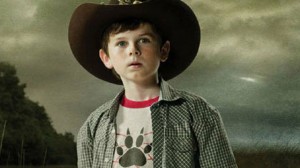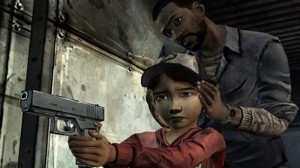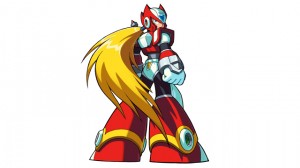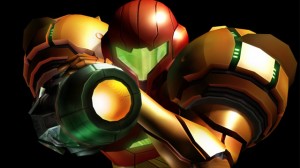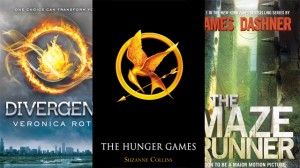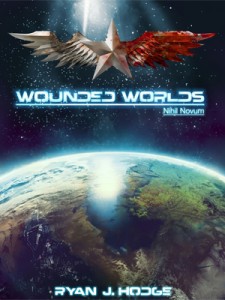-Ryan J. Hodge
For someone who enjoys a great story, is there anything better than a narrative that engages you from the very start? Imagine a world so rich you can almost smell the scents in the air, a delivery so clever it forces you to think in a way you never thought you would. I’m Ryan J. Hodge, author, and I’d like to talk to you about…Video Games.
Yes, Video Games. Those series of ‘bloops’ and blinking lights that –at least a while ago- society had seemed to convince itself had no redeeming qualities whatsoever. In this article series, I’m going to discuss how Donkey Kong, Grand Theft Auto, Call of Duty and even Candy Crush can change the way we tell stories forever.
What Videogames Teach Us About Writing Child Characters
When we imagine the ‘great’ characters of fiction, they don’t tend to be limited by class, race, or occupation. We can empathize just as much with the Corleones of the Godfather as we can with Kunta Kinte of Roots. And yet, there seems to be a strict ‘18 and over’ age limit for these timeless characters.
While we might look upon films like The Goonies or Sandlot with fondness, it cannot seriously be said that these titles delivered stirring, powerful performances from their child stars on the order of Godfather or Roots. Indeed, for a distressing number of works, any story featuring children that aren’t explicitly ‘about’ children have a tendency to turn in monotone and forgettable roles for their tykes.
This, of course, presents a vexing quandary for writers. Given that we were all children at some point; why does it appear to be so difficult to render at least a convincing portrayal of society’s most vulnerable population? And, for that matter, what could videogames possibly offer to remedy this?
Part of the difficulty of capturing the mind of children is that, more than adult characters, their competency must constantly be called into question. An audience will not suspend its disbelief that a child may be able to dispatch an adversary as easily as they would an adult character; nor will they blindly accept a child’s ability to solve problems that adults can’t. Often, these limitations result in children being portrayed as useless or inscrutable if not outright stupid.
Unfortunately, these issues stem from attempting to write children as full-fledged characters in the first place; rather than as a function of other characters. Indeed, even in the real world, that which defines a child is often set by the adults (or lack thereof) influencing the child. A child’s world view is usually filtered by how similar or opposite they wish to be with regard to parental figures.
One of the best executions of this notion can be found in Telltale’s The Walking Dead (2012-2014). In this title, Players take on the role of Lee Everett, who finds himself caring for a small girl named Clementine. While in most games, caring for a non-playable character (also known as the dreaded ‘Escort Mission’) can be one of the most torturous exercises in contemporary design; The Walking Dead instead tasks the Player with teaching Clementine how to take care of herself.
As we watch her grasp and internalize these lessons, we form a genuine bond with the character. Slowly, she becomes more confident and useful to the group. In this, we learn the first critical aspect of writing a child character: how they are being prepared to deal with the world.
Consider the character of Hit Girl, specifically as she’s portrayed in the 2010 film Kick Ass. Hit Girl’s alter-ego ‘Mindy’ was raised by a clear psychopath who went so far to ‘prepare’ her for a life of vigilante style crime fighting that he actually shot her in a vest. As such, we see that Hit Girl’s attitudes regarding her role as a crime fighter is far more dispassionate than the film’s protagonist.
For her, walking into a room full of armed foes is more concerning than it is terrifying. While our ‘hero’ openly weeps in despondence upon being captured, Hit Girl fights like a hellcat; relying on superior training to dispatch better armed and physically imposing opponents.
Hand-in-hand with this point will be children’s attempts to validate themselves in the eyes of their peers and role models. Often, in attempting to capture pursuits of such validation, writers will make the mistake of having a child character act completely autonomously (usually to force a plot point). Consider the Gotham TV series (2014-Present). In episode 1, Bruce Wayne (age 10) loses his parents. In the very next episode; he is training himself to ‘conquer fear’ by taking part in insane and utterly needless risks. Apparently he’s doing this to honor (validate himself in) his parents’ memory but in effect; over the course of 48 hours, he goes from traumatized orphan to Batman-in-training.
What makes this so vapid is that it utterly squanders Bruce’s ability to look upon Jim Gordon as a role model. It would not take much writing effort to have young Master Wayne to follow detective Gordon’s exploits, forge a relationship with him, and slowly begin to model his actions and attitudes after him. It also creates a better excuse for Gordon to not know who Batman is when he eventually appears. There’s quite a gap between ‘the kid who looks up to you’ and ‘the child who started acting like Batman fifteen years before Batman showed up’.
The key here is that this child lacks a personal parallel character; someone to measure the growth of his abilities against. One of the best counter-examples of this in games can be found in Mega Man X (Capcom, 1993). In the first level of this game, Players are pitted against a sub-villain named Vile. In this encounter, the Player cannot even visibly damage his opponent. However, moments before he is destroyed; the player is rescued by ‘Zero’, who forces Vile to flee the field after a single strike.
For the remainder of the game, the Player seeks to be as strong as Zero; collecting armor and weapons to match the personal parallel character until the Player’s subsequent encounter with Vile can be resolved with one shot. While it’s difficult to argue that Mega Man is a child in this case (we’ll ignore the comics for now), the ideas are transferable. The entire point of the game is to match and surpass a ‘role model’.
Seeking this validation may also contain an unhealthy element as well. In the 1994 film Leon the Professional, 12-year-old Mathilda seeks the tutelage of a professional assassin for the sake of taking revenge on her family’s murderers. However, her home life before-hand was not quite story-book perfect and so she developed a tendency to bond with anyone who showed her affection. This tendency is so compulsive that she actually attempts to forge a romantic bond with Leon; so desperate is her need for validation.
This dynamic is recreated (albeit in a particularly bizarre fashion) in Metroid: Other M (Team Ninja/Nintendo, 2010). While the main character is herself an adult, Samus acts in a peculiarly child-like fashion in that she will refuse to employ life-saving equipment unless instructed by her handler –a man that she seems to have a preternatural amount of respect for despite his obvious mishandling of her talents.
The final component games may teach us about writing a child character is imparting a certain level of intractability. While it is true that children will often model their behavior after those whom they admire; there will also be a drive for self-determination as distinct from their role models. This will yield a certain stubbornness and cynicism that, if left unchecked, can actually become counter-productive (if not utterly self-destructive) but is also necessary to challenge what may be outdated ideas.
It can be very tricky to balance such attributes between ‘realistic’ and ‘annoying’. An excellent embodiment of this theme can be found in The Stanley Parable (Galactic Café, 2011). As mentioned in the previous article; the player has the option to follow the narrator’s instructions exactly (and thereby achieve an ending that is fairly cookie-cutter and unfulfilling) or he may deviate from the narrator’s commands at any point and alter the story toward a different outcome. Some of these outcomes are amusing, some are lethal. Ultimately Stanley’s narrator may only guide the Player (just as a parent guides their offspring), but he cannot control what the Player does. All that is certain is that such deviations will lead to the narrator attempting to nudge the Player back on-track until the narrator descends into an outright combative relationship with him.
In this, we can see a clear parallel between compulsively obedient children, less obedient ones, and ‘problem kids’. In this comparison the narrator is the parent, and the Player is the child; acting within and acting without the given instructions at will.
Another example of such dangerous deviation can be examined in The Path (Tale of Tales, 2009). Here, the Player assumes the role of a Little Red Riding Hood analog and only has one instruction: Stay on the path to reach grandmother’s house. Simple enough, but around the path are scattered items that unlock new features and rooms upon reaching grandmother’s house. Of course, The Wolf also lies in wait beyond the path.
Again, we see that a certain level of precociousness is healthy, but too much may be decidedly unhealthy. While questioning authority is very much a theme in young adult fiction…
…my favorite take on it can be found in the 1998 novel Holes (Louis Sachar). In this story, a group of children are sent to a ‘reform camp’ which is (unbeknownst to anyone else) run by a corrupt staff. In the context of the tale, the children very rarely try to combat their authority figures directly; but question and investigate inconsistencies in their words and behaviors in secret. Ultimately, the children are able to overthrow their ‘betters’ not through any violence of action; but by disproving everything the authority had told them was true.
The satisfaction in the final climax comes when the children can refute every single one of the presumed authority’s claims with irrefutable evidence; thus demonstrating that while one should not always accept what they’re told, seeking the truth is vastly more important than basic skepticism.
As I bring this article to a close, there is one other point I feel is as personal as it is critical. I grew up with video games as a child, as have many of my contemporaries. I have found that replaying the games of my youth stir long-forgotten feelings; seasoned with some additional years of experienced. I recall distinctly the wants and interests of those halcyon days and the personal growth I exhibited merely through gaining the discipline to surpass a particularly difficult level. I remember the determination to not allow the game to ‘beat me’.
From where I sit, there’s no better reason than that to pick up a controller and play some video games. Who knows? It just might make you a better writer.
Ryan J. Hodge is a science fiction author and is a Games Industry veteran. His latest book, Wounded Worlds: Nihil Novum, is available now for eBook & Paperback.
You can now follow Ryan on Twitter @RJHodgeAuthor


